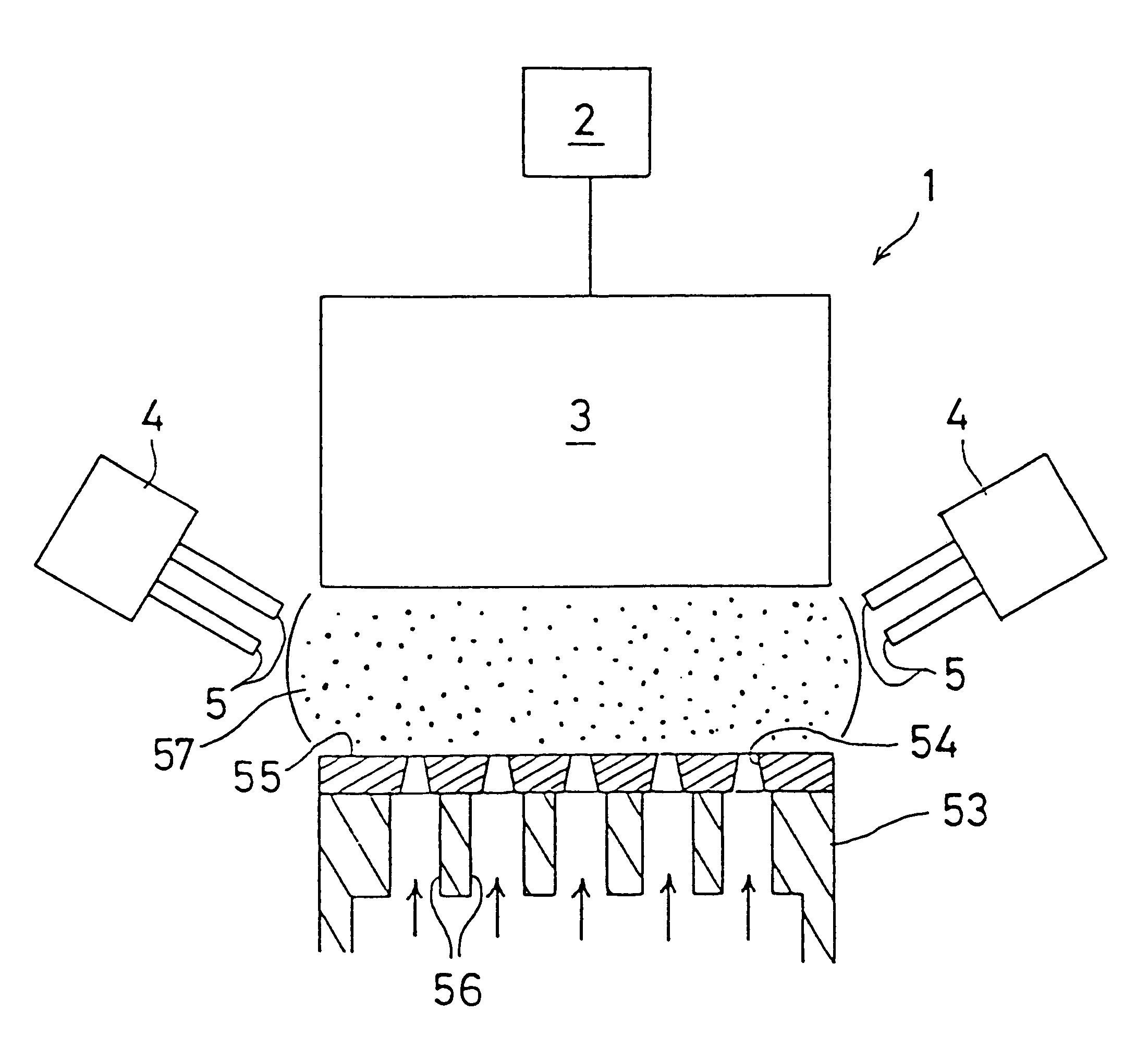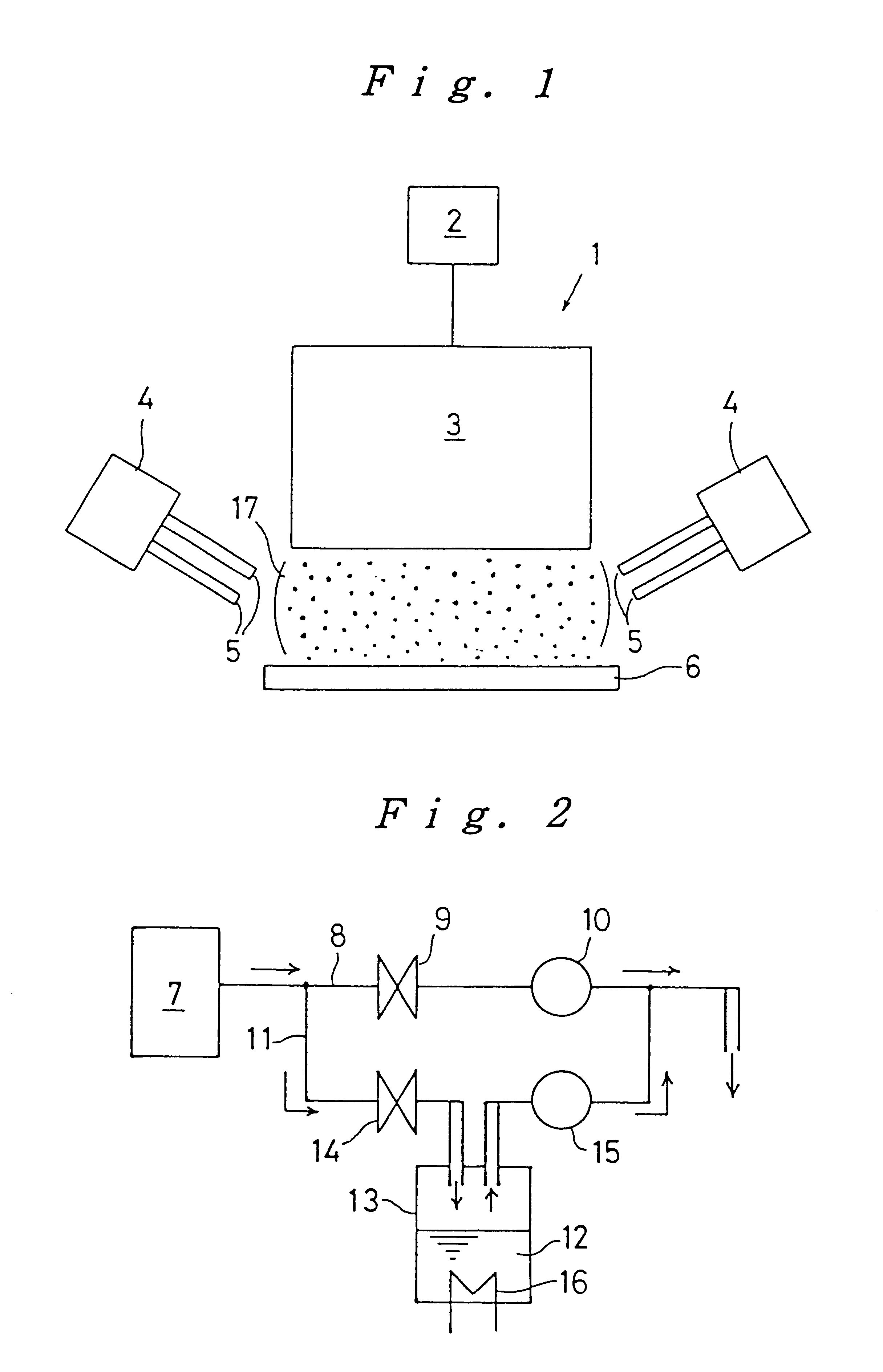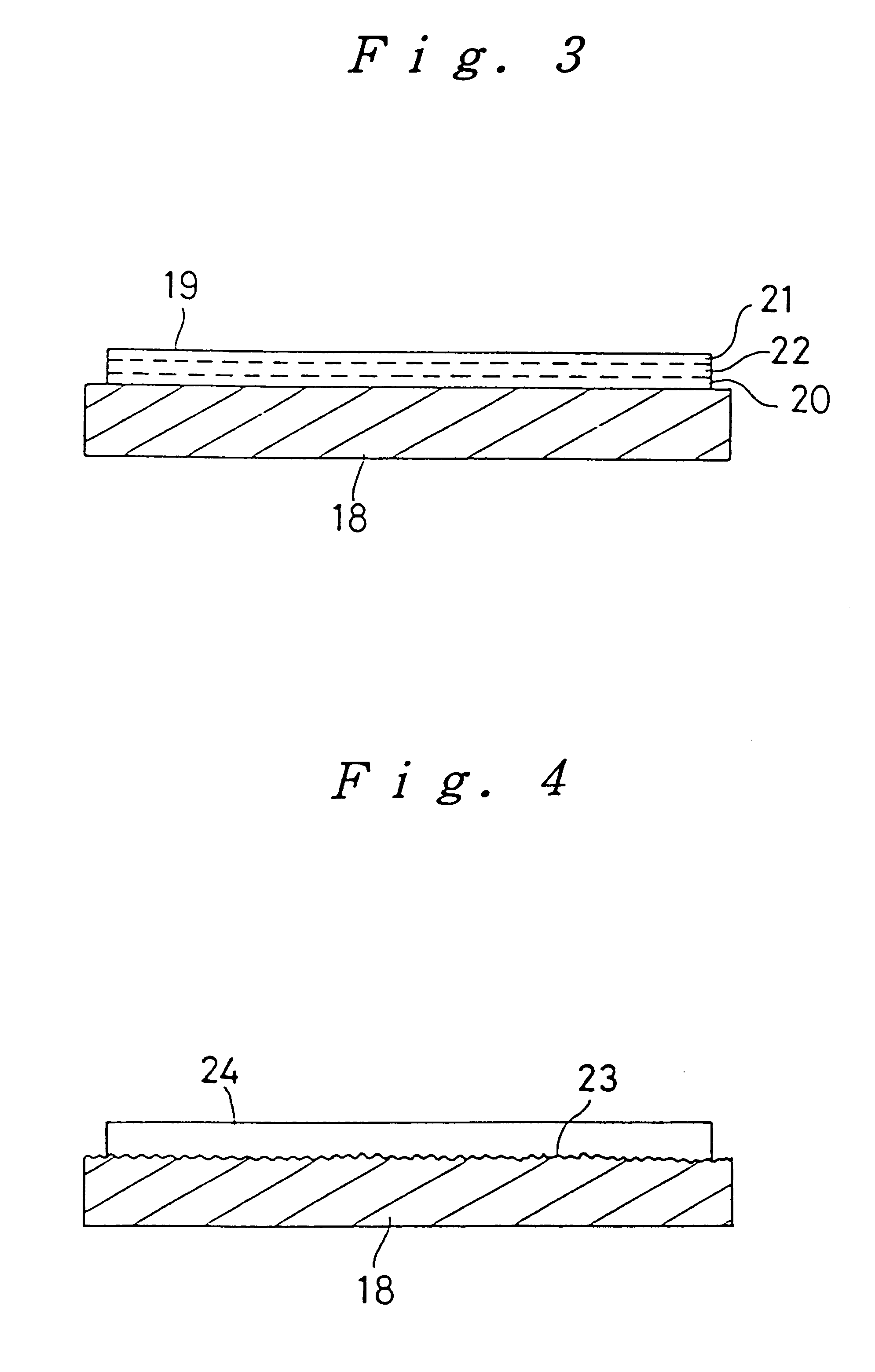Method and apparatus for atmospheric pressure plasma surface treatment, method of manufacturing semiconductor device, and method of manufacturing ink jet printing head
a plasma surface treatment and plasma technology, applied in the field of atmospheric pressure plasma surface treatment, can solve the problems of large amount of labor, large apparatus, complicated and high-priced equipment,
- Summary
- Abstract
- Description
- Claims
- Application Information
AI Technical Summary
Benefits of technology
Problems solved by technology
Method used
Image
Examples
first embodiment
FIG. 1 schematically shows the configuration of a surface treatment apparatus used for an atmospheric-pressure plasma surface treatment method in accordance with the present invention. Surface treatment apparatus 1 has a rod-like discharge generation electrode 3 connected to a power source 2, and gas supply units 4 for supplying discharging gas. Gas supply units 4 have openings 5 for ejecting discharging gas to positions in the vicinity of an end of electrode 3. A glass substrate 6, provided as a member to be treated, for example, as a substrate for an LCD, is disposed immediately below electrode 3 with a comparatively small predetermined spacing.
First, the above-mentioned discharging gas is supplied from gas supply units 4 to replace the atmosphere between the end of electrode 3 and substrate 6 and in the vicinity thereof. In this embodiment, as discharging gas, a gas was used which was prepared in such a manner that an organic material in a liquid state at room temperature, select...
second embodiment
FIG. 6 shows an atmospheric-pressure plasma surface treatment method in accordance with the present invention. In this embodiment, an organic material 31 used for a surface treatment of a glass substrate 6 is previously applied to the surface of the substrate. Since organic material 31 is a liquid, it is convenient to provide a running preventing frame 32 on substrate 6. Frame 32 may be formed integrally with substrate 6. Alternatively, a separate frame member may be disposed on the substrate.
Surface treatment apparatus 1 is arranged in the same manner as the embodiment of FIG. 1. An atmosphere between the end of electrode 3 and substrate 6 and in the vicinity of the same is replaced with discharging gas supplied from gas supply units 4. A predetermined voltage is applied from power source 2 to electrode 3 to cause gas discharge between the end of electrode 3 and substrate 6. A plasma is made in discharge region 17. The above-mentioned discharging gas is thereby dissociated, ionized...
third embodiment
FIG. 9 shows the surface treatment apparatus used in accordance with the present invention. This surface treatment apparatus 38 differs from the surface treatment apparatuses of FIGS. 1 and 2 in that a thin plate-like electrode 39 connected to a power source 2 is covered with a dielectric 40 such as quartz. A box-like guide 41 made of an insulating material and disposed on the outside of dielectric 40 so as to face to the same through a certain spacing has lower end portions 42 inwardly inclined so as to extend to positions in the vicinity of an end of electrode 39. Grounded electrodes 43 provided as electrodes opposed to power source electrode 39 are attached to outer surfaces of guide 41. Glass substrate 6 to be surface-treated is disposed below an elongated straight downward opening defined by guide lower end portions 42.
The interiors of the chambers between dielectric 40 and guide 41 are replaced with discharging gas containing an organic material supplied from gas supply unit 4...
PUM
| Property | Measurement | Unit |
|---|---|---|
| pressure | aaaaa | aaaaa |
| speed | aaaaa | aaaaa |
| frequency | aaaaa | aaaaa |
Abstract
Description
Claims
Application Information
 Login to View More
Login to View More - R&D
- Intellectual Property
- Life Sciences
- Materials
- Tech Scout
- Unparalleled Data Quality
- Higher Quality Content
- 60% Fewer Hallucinations
Browse by: Latest US Patents, China's latest patents, Technical Efficacy Thesaurus, Application Domain, Technology Topic, Popular Technical Reports.
© 2025 PatSnap. All rights reserved.Legal|Privacy policy|Modern Slavery Act Transparency Statement|Sitemap|About US| Contact US: help@patsnap.com



